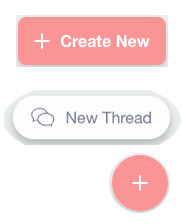We’d like to remind Forumites to please avoid political debate on the Forum.
This is to keep it a safe and useful space for MoneySaving discussions. Threads that are – or become – political in nature may be removed in line with the Forum’s rules. Thank you for your understanding.
📨 Have you signed up to the Forum's new Email Digest yet? Get a selection of trending threads sent straight to your inbox daily, weekly or monthly!
Octopus Energy reviews: Give your feedback
Comments
-
Are you still on Go Faster? If so, the meter reading isn't used for billing, the half-hourly consumption data is.Telegraph_Sam said:I would be very reluctant to rely on my ancient mobile plus App to come up with credible readings. On the othet hand I have a smart meter + IHD here at home which seem perfectly capable of doing the job as is. These must be the same source data as used by OP. Question: Why can't the monthly opening and closing readings be shown on the.invoices?? From latest posts perhsps there is hope ..
0 -
Someone mentioned meter reading problems on smart meters? I randomly landed on a short Youtube vid that explained how to find elec and gas meter readings on the IHD3 widget. Wasn't mentioned by Octopus nowhere. Or fitter.
My changeover went better than hoped. Booked last Monday and engineer turned up Friday as planned as was driving away within 40 minutes leaving me with two new meters. Said he'd fitted 14 smart meters already that day.
Wasn't expecting any goodies for a few days, but the wee IHD coughed up gas and elec use and pricing within the hour. Today Octopus provided csv downloads but only the elec half-hour figures were provided. From this forum, new to check the flashing gas LED on the Hub, and then checked my gas meter on CAB's smart meter checker. All good. Finally, signed up on n3rgy.com and they gave me my miscreant half-hour gas figures. All less than 24 hours from new smart meters fitted.
Can't last I expect. Only beef is the IHD3 has no rechargeable battery in it.0 -
Yes.
Two sides of the same coin. If the system is working then the totall of the half hourly consumption data should be the same as the difference between the the monthly readings. Otherwise why have a meter that records the latter? Publishing these should just provide a cross check that both sre in. sync.
Telegraph Sam
There are also unknown unknowns - the one's we don't know we don't know0 -
How can you put a smart meter back in it's box? It's attached to your wall with wires or pipes coming out of it, measuring how much gas or electricity you're using.Telegraph_Sam said:That last comment is very interesting. The question is is there some secrecy surrounding the readings? If not and the smart meter is doing its thing then to me it is common sense to publish and use them to keep a check on the invoiced consumption. If they are not available anywhere then it's time to put the smart meter back in its box and revert to sending in manual readings.
If you mean the IHD (In Home Display) that is just a toy and has nothing to do with Octopus getting meter readings.
Octopus actually suggest that if you would like a bill to be generated, input your meter readings online. You can do this as often as you want. If you don't enter readings they will bill at least every 3 months unless you said at sign up you want them monthly.Barnsley, South Yorkshire
Solar PV 5.25kWp SW facing (14 x 375) installed Mar 22
Lux 3.6kw hybrid inverter and 9.6kw Pylontech batteries
Daikin 8kW ASHP installed Jan 25
Octopus Cosy/Fixed Outgoing0 -
Telegraph_Sam said:Yes.
Two sides of the same coin. If the system is working then the totall of the half hourly consumption data should be the same as the difference between the the monthly readings. Otherwise why have a meter that records the latter? Publishing these should just provide a cross check that both sre in. sync.The meter needs to record accumulated usage so that you have the freedom to leave a TOU tariff or change supplier. Also, you'll remember that the terms of the contract say that if Octopus can't get half-hourly readings from your meter for any period, they "will charge you as we would a customer on our Flexible Octopus variable tariff", which would fall back to readings rather than consumption data. They will therefore take a reading from your smart meter at the same time as generating a bill from your consumption data, so that they have this in case of being unable to get the consumption data for the next bill.This reading can be accessed via the website as well as the app. You can find it by going to Meter Readings -> Submit Electricity Reading (no need to actually submit one). I don't know why they only show the latest reading and not a more complete history as they do in the app.The most important cross check to do is total consumption (the amount you're charged for on the bill) vs increase in monthly reading. I am sure Octopus is already doing this.1 -
Just to add my often repeated words of caution. The IHD displays the total of the 4 registers whether they are in use or not. Unless the consumer is 100% sure that only one register has been used, then the readings requested on a switch must be taken from the actual meter.masonic said:Telegraph_Sam said:Yes.
Two sides of the same coin. If the system is working then the totall of the half hourly consumption data should be the same as the difference between the the monthly readings. Otherwise why have a meter that records the latter? Publishing these should just provide a cross check that both sre in. sync.The meter needs to record accumulated usage so that you have the freedom to leave a TOU tariff or change supplier. Also, you'll remember that the terms of the contract say that if Octopus can't get half-hourly readings from your meter for any period, they "will charge you as we would a customer on our Flexible Octopus variable tariff", which would fall back to readings rather than consumption data. They will therefore take a reading from your smart meter at the same time as generating a bill from your consumption data, so that they have this in case of being unable to get the consumption data for the next bill.This reading can be accessed via the website as well as the app. You can find it by going to Meter Readings -> Submit Electricity Reading (no need to actually submit one). I don't know why they only show the latest reading and not a more complete history as they do in the app.The most important cross check to do is total consumption (the amount you're charged for on the bill) vs increase in monthly reading. I am sure Octopus is already doing this.I note that the App now shows readings but these are only the readings used at the last billing date. The App also uses the designations PEAK and OFFPEAK which may be incorrect. For example, I am on the Go Faster tariff and my cheap units are allocated to the OFFPEAK line and vice versa.1 -
I appear to have 48 registers on my meter, though only two are non-zero. The app shows both of the non-zero registers and designates them Day and Night. Only one has increased since January 2022. Prior to that (while still on the same tariff) my energy was being divided between them, but not in proportion to my peak and offpeak usage. So for me, the readings are not very useful!Dolor said:
Just to add my often repeated words of caution. The IHD displays the total of the 4 registers whether they are in use or not. Unless the consumer is 100% sure that only one register has been used, then the readings requested on a switch must be taken from the actual meter.masonic said:Telegraph_Sam said:Yes.
Two sides of the same coin. If the system is working then the totall of the half hourly consumption data should be the same as the difference between the the monthly readings. Otherwise why have a meter that records the latter? Publishing these should just provide a cross check that both sre in. sync.The meter needs to record accumulated usage so that you have the freedom to leave a TOU tariff or change supplier. Also, you'll remember that the terms of the contract say that if Octopus can't get half-hourly readings from your meter for any period, they "will charge you as we would a customer on our Flexible Octopus variable tariff", which would fall back to readings rather than consumption data. They will therefore take a reading from your smart meter at the same time as generating a bill from your consumption data, so that they have this in case of being unable to get the consumption data for the next bill.This reading can be accessed via the website as well as the app. You can find it by going to Meter Readings -> Submit Electricity Reading (no need to actually submit one). I don't know why they only show the latest reading and not a more complete history as they do in the app.The most important cross check to do is total consumption (the amount you're charged for on the bill) vs increase in monthly reading. I am sure Octopus is already doing this.I note that the App now shows readings but these are only the readings used at the last billing date. The App also uses the designations PEAK and OFFPEAK which may be incorrect. For example, I am on the Go Faster tariff and my cheap units are allocated to the OFFPEAK line and vice versa.
0 -
Telegraph_Sam said:Yes.
Two sides of the same coin. If the system is working then the totall of the half hourly consumption data should be the same as the difference between the the monthly readings.Actually, no, the two will not necessarily always be precisely the same, as the data is stored separately and rounded differently, also the daily index reading is not necessarily stored at the precise moment that the last half-hour period ends.You can use either the half-hour data or the daily index readings to generate a valid bill, trying to reconcile the two will always leave you with small differences.Fine if you can accept the small difference, not fine if you are going to see that as an 'error'...1 -
SMETS2 meters have 4 registers R1 to R4. What you see on an Octopus t-o-u bill is a daily usage statement with 48 slots.masonic said:
I appear to have 48 registers on my meter, though only two are non-zero. The app shows both of the non-zero registers and designates them Day and Night. Only one has increased since January 2022. Prior to that (while still on the same tariff) my energy was being divided between them, but not in proportion to my peak and offpeak usage. So for me, the readings are not very useful!Dolor said:
Just to add my often repeated words of caution. The IHD displays the total of the 4 registers whether they are in use or not. Unless the consumer is 100% sure that only one register has been used, then the readings requested on a switch must be taken from the actual meter.masonic said:Telegraph_Sam said:Yes.
Two sides of the same coin. If the system is working then the totall of the half hourly consumption data should be the same as the difference between the the monthly readings. Otherwise why have a meter that records the latter? Publishing these should just provide a cross check that both sre in. sync.The meter needs to record accumulated usage so that you have the freedom to leave a TOU tariff or change supplier. Also, you'll remember that the terms of the contract say that if Octopus can't get half-hourly readings from your meter for any period, they "will charge you as we would a customer on our Flexible Octopus variable tariff", which would fall back to readings rather than consumption data. They will therefore take a reading from your smart meter at the same time as generating a bill from your consumption data, so that they have this in case of being unable to get the consumption data for the next bill.This reading can be accessed via the website as well as the app. You can find it by going to Meter Readings -> Submit Electricity Reading (no need to actually submit one). I don't know why they only show the latest reading and not a more complete history as they do in the app.The most important cross check to do is total consumption (the amount you're charged for on the bill) vs increase in monthly reading. I am sure Octopus is already doing this.I note that the App now shows readings but these are only the readings used at the last billing date. The App also uses the designations PEAK and OFFPEAK which may be incorrect. For example, I am on the Go Faster tariff and my cheap units are allocated to the OFFPEAK line and vice versa.
When Octopus carries out its daily data pull, the meter returns the index readings plus an XML containing the 30 minute usage information.
To send the correct tariff information to my meter for Go Faster, Octopus has activated registers R1 and R2. If I was to switch tomorrow, I would go into the tariff matrix in my meter sub-menu and I would note the R1 and R2 readings. I would pass these to my new supplier without using the words peak or offpeak/ day or night. Ofgem has no rules on which registers should be set up for billing.0 -
Dolor said:
SMETS2 meters have 4 registers R1 to R4. What you see on an Octopus t-o-u bill is a daily usage statement with 48 slots.masonic said:
I appear to have 48 registers on my meter, though only two are non-zero. The app shows both of the non-zero registers and designates them Day and Night. Only one has increased since January 2022. Prior to that (while still on the same tariff) my energy was being divided between them, but not in proportion to my peak and offpeak usage. So for me, the readings are not very useful!Dolor said:
Just to add my often repeated words of caution. The IHD displays the total of the 4 registers whether they are in use or not. Unless the consumer is 100% sure that only one register has been used, then the readings requested on a switch must be taken from the actual meter.masonic said:Telegraph_Sam said:Yes.
Two sides of the same coin. If the system is working then the totall of the half hourly consumption data should be the same as the difference between the the monthly readings. Otherwise why have a meter that records the latter? Publishing these should just provide a cross check that both sre in. sync.The meter needs to record accumulated usage so that you have the freedom to leave a TOU tariff or change supplier. Also, you'll remember that the terms of the contract say that if Octopus can't get half-hourly readings from your meter for any period, they "will charge you as we would a customer on our Flexible Octopus variable tariff", which would fall back to readings rather than consumption data. They will therefore take a reading from your smart meter at the same time as generating a bill from your consumption data, so that they have this in case of being unable to get the consumption data for the next bill.This reading can be accessed via the website as well as the app. You can find it by going to Meter Readings -> Submit Electricity Reading (no need to actually submit one). I don't know why they only show the latest reading and not a more complete history as they do in the app.The most important cross check to do is total consumption (the amount you're charged for on the bill) vs increase in monthly reading. I am sure Octopus is already doing this.I note that the App now shows readings but these are only the readings used at the last billing date. The App also uses the designations PEAK and OFFPEAK which may be incorrect. For example, I am on the Go Faster tariff and my cheap units are allocated to the OFFPEAK line and vice versa.
When Octopus carries out its daily data pull, the meter returns the index readings plus an XML containing the 30 minute usage information.
To send the correct tariff information to my meter for Go Faster, Octopus has activated registers R1 and R2. If I was to switch tomorrow, I would go into the tariff matrix in my meter sub-menu and I would note the R1 and R2 readings. I would pass these to my new supplier without using the words peak or offpeak/ day or night. Ofgem has no rules on which registers should be set up for billing.No, I'm not getting the 48 from my bill, I'm going into my meter's menu to the reading matrix and scrolling through them all. The first two seem to marry up with what Octopus has (and add together to match my summed reading), I then have several pages of zeroes, not just the two expected for R3 and R4.Edit: Just went out and double checked it. Under 'Tariff Matrix' the only relevant sub-menu option I have is 'TOU Register', and within that I have T01 to T48 with T01 and T02 containing the 'Day' and 'Night' readings, T03-T48 are all zero.0
Confirm your email address to Create Threads and Reply

Categories
- All Categories
- 352.2K Banking & Borrowing
- 253.6K Reduce Debt & Boost Income
- 454.3K Spending & Discounts
- 245.2K Work, Benefits & Business
- 600.9K Mortgages, Homes & Bills
- 177.5K Life & Family
- 259K Travel & Transport
- 1.5M Hobbies & Leisure
- 16K Discuss & Feedback
- 37.7K Read-Only Boards





